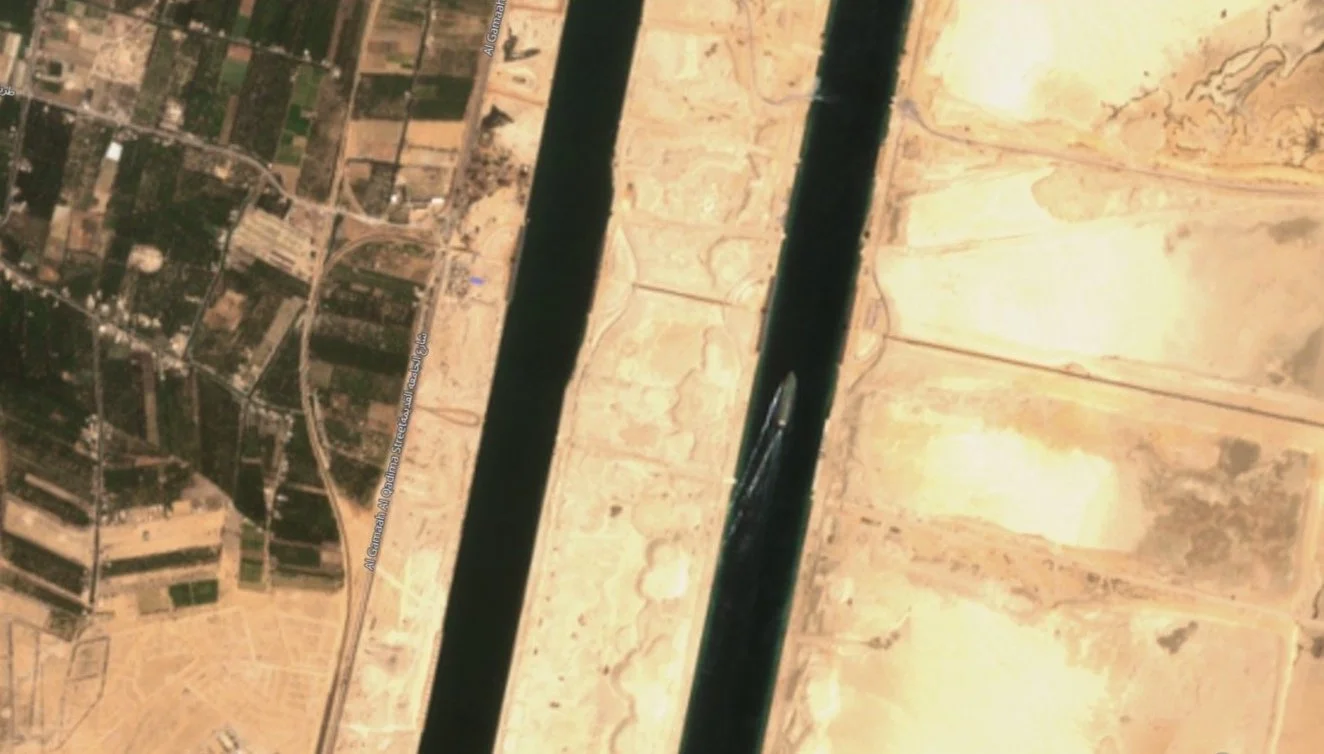Tricked into Helping the Enemy
By Nathaniel Peutherer
A Shadow Fleet vessel traversing the Suez Canal. Source: Copernicus Sentinel Data (processed with EO Browser).
Behind the reporting of ‘Whispers on the Ocean’.
During the investigation, it became clear that the Seafarers’ whisper networks were well-practiced at helping unsuspecting crew to avoid the inhumane conditions of the Shadow Fleet. Sailors had been detailing their experiences with sanctions-busting ships bound for Iran and Venezuela long before Russia’s involvement.
One sailor spoke of life on board an oil-smuggling ship in Venezuela. The Senior Officers, who had lost control of the crew, intimidated the deck hands into working long hours with no protection from the searing 45 degree heat, and put them at risk of scurvy due to the lack of fruits or vegetables on board. In the evenings, drunken brawls would go unchecked, and the ship was regularly vandalised.
After the name of the vessel began to make the rounds on Telegram, the ship’s owners were eventually forced to raise their pay offering to persuade the clued-up seafarers to join the now infamous shadow vessel.
But the efficacy of the seafarers’ attempts to protect themselves over multiple years led to a puzzling question: why were the crewing agencies who employed them still being tricked by the Shadow Fleet?
~
One problem is that recruitment for the Shadow Fleet is a complex web of crewing agencies, shell companies, and ship owners. Many crewing agencies are also interconnected through various partnerships. If a ship owner succeeds in fooling one agency, they are often able to trick others with ease, as the duped agency passes the request for sailors onto their unsuspecting partners.
Another issue is that ship owners will withhold a vessel’s IMO number, the unique identifier provided by the International Maritime Organisation, until a crew member has been found. At which point it becomes the seafarer’s responsibility to uncover the vessel’s illicit activities before signing the contract.
~
The opaque structure of this industry made it likely that agencies in Ukraine were unknowingly helping Russia. But how to prove it? The process quickly evolved into a journalist’s favourite pastime: finding hidden connections.
Starting from a list of known Russian oil-smuggling vessels kept by the non-profit watchdog United Against Nuclear Iran, it was possible to cross-reference the ships on the list against historic maritime recruitment data from various jobs boards, Telegram chats, and social media posts.
But making the connections was never so simple. With many of the IMO numbers withheld, a specific set of ship characteristics were needed to match a job posting to a particular vessel. This alternative approach made it somewhat possible to track the Shadow Fleet through a myriad of identity changes.
A job posting that withheld a ship’s name and IMO number may nonetheless list a combination of features, including flag registration history, dead weight tonnage, year of build, and ship type, all of which are relevant for the purpose of finding a suitable candidate.
Occasionally, this web of features was only enough to narrow down the search to a particular fleet of ships, requiring a lengthy process of ruling out the fleet’s decommissioned vessels in the hope that just one would remain.
Other vessels were confirmed by contacting the crewing agencies directly. The agencies’ official communication channels were often unresponsive when asked to verify the findings of the investigations. It proved more effective to identify those agency employees whose social media posts suggested they were sympathetic to the Ukrainian war effort. These sources ultimately proved vital in confirming the extent of the Shadow Fleet’s deception.
